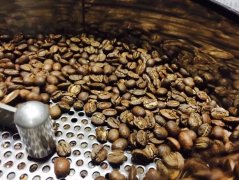Coffee Encyclopedia beans and grading of Ethiopian Coffee

The grading we are talking about now refers to the grading of raw beans in the country where coffee is produced. (no matter which country coffee cooked beans are not graded)
Ethiopian coffee beans are divided into five levels.
The first and second stages are reserved for washing beans with water.
Grade 1 represents 0-3 raw beans and Grade 2 represents 4-12 missing beans per 300g raw beans.
Grade 1 (G1) grade water washed beans are very rare and difficult to buy. At present, all the water washed beans exported from Ethiopia are G2 grade.
The quality of sun-dried beans is in the order of G3, G4 and G5. Although the number of defective beans in G4 is much less than that of G5, coffee farmers claim that in order to save tax on exports, they often lower the quality of G4 to G5 in order to save money. This may just be a marketing tactic, but in fact the quality of the G5 is not as good as that of the G4.
Ethiopian beans are easily recognizable, mostly small and pointed long beans, known as [long berry], and often mixed with small oval-shaped short beans, known as [short berry], appear to be uneven in size and appearance.
The commercial Dazong beans of G4 or G5 are mostly mixed with hundreds of different varieties of coffee beans in different producing areas, and the phenomenon of uneven appearance of beans is the most obvious.
Ethiopian coffee has the best citrus aroma in the world. No matter espresso or hand-flush, you can smell pungent orange or lemon fragrance during extraction.
The entrance is characterized by strong floral, fruity, sour and sweet aromas. The biggest disadvantage is that it is easy to bake unevenly, especially sun-dried beans. Even the best G3 Harald sun-dried beans often appear uneven color, good taste is the most important.
Important Notice :
前街咖啡 FrontStreet Coffee has moved to new addredd:
FrontStreet Coffee Address: 315,Donghua East Road,GuangZhou
Tel:020 38364473
- Prev

How is the coffee graded? who is in charge of grading? How is it graded?
Select coffee is usually the top coffee, but what does the top coffee represent? Who is in charge of grading? How is it graded? Although grade is not the only criterion for distinguishing flavor, it is still a quite objective index. First, why there are different ways of managing the origin of graded coffee, some are composed of large and small farmers, and some are dominated by specialized enterprises. Even if the coffee in the same place
- Next

How to evaluate the taste of coffee?
The taste of individual coffee has something to do with coffee beans, sour and bitter often vary from person to person, there is no clear standard, and to be honest, I am not interested in single coffee. So let me also talk about the standard of espresso. Espresso refers to the use of carefully matched mixed beans to make espresso, based on which various kinds of coffee are derived. So the key point of its judgment
Related
- Guji coffee producing area of Guji, Ethiopia: Humbela, Shakiso, Wulaga
- What is the most expensive variety of Qiloso in BOP multi-variety group?
- How to store the coffee beans bought home?
- Why are Yemeni coffee beans so rare now?
- Ethiopian Sidamo all Red Fruit Sun Sun Santa Vini Coffee beans
- SOE is mostly sour? What does it mean? Is it a single bean? what's the difference between it and Italian blending?
- Is Italian coffee beans suitable for making hand-brewed coffee?
- How to choose coffee beans when making cold coffee? What kind of coffee beans are suitable for making cold coffee?
- Just entered the pit to make coffee, what kind of coffee beans should be chosen?
- Can only Japan buy real Blue Mountain Coffee? What are authentic Jamaican Blue Mountain coffee beans?

